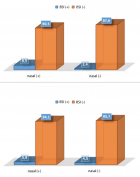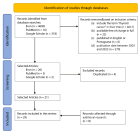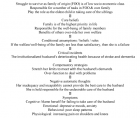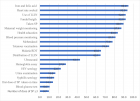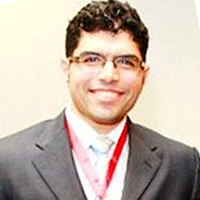Previous Issue (Volume - 5 | Issue - 1)
Senile Cataract
Published on: 2nd February, 2024
Cataracts may be described as the opacity of crystalline lenses present in the eye. The translucent crystalline lens is a part of the human eye. It possesses all the physical characteristics of a biconvex lens. The eye’s lens performs similar functions to a camera’s lens. The lens directs light rays entering the eye to the retina’s sensitive layers. Any factor that increases the absorption of scattering of light by the lens reduces its transparency. The opacity of the lens or its capsule, whether developmental or acquired, is called a cataract. Cataracts vary in degree of density and site and assume various forms. Cataract is the leading cause of reversible visual impairment and blindness globally. There are several classifications of cataracts based on morphologic and/or etiologic criteria. However, in epidemiologic studies, the simplified system of three types based on localization of lens opacities is most commonly used: Nuclear cataract is the most common type, followed by cortical cataract and posterior subcapsular cataract. This most prevalent form of acquired cataract, also known as an “age-related cataract,” affects people of both sexes equally and typically develops after age 50. More than 90% of people experience senile cataracts by age 70. Although one eye is almost always afflicted before the other, the disorder is typically bilateral. In the available literature, there is no mention of any such drug that could reverse the opacity of the lens (cataract) once it occurred and make it clear and transparent again.Only replacement of opaque lenses with artificial transparent Intraocular lens (IOL) is successful treatment of cataracts. This review focuses on senile cataracts and the best possible management of senile cataracts.
Lecture: “First Aid to the Population in Case of Heat and Sunstroke during Accidents, Catastrophes, Natural Disasters and Terrorist Attacks” of the Subject “Life Safety” for Humanitarian and Technical Universities
Published on: 5th February, 2024
To prepare the population for first aid in case of heat and sunstroke in the context of global warming, algorithms for the basics of didactics of the educational topic “Heat and sunstroke” of the subject “Life safety” are proposed. The 30-year experience of teaching the subject in humanitarian state educational institutions of higher professional education of a non-medical profile in Syktyvkar is summarized. For each of the considered educational issues, a brief summary of the material presented is given.
Smart Cities and Aging Well: Exploring the Links between Technological Models and Social Models for Promoting Daily Social Interaction for Geriatric Care
Published on: 19th March, 2024
The aging global population requires a new social model to meet the growing social, economic, and physical needs of seniors. Western social models need to be reconsidered in light of examples that support communal ways of living, which are sustainable through smart city design for more supportive geriatric care systems. To address the complex problems of geriatric care in this growing aging population with specific needs related to increased lifespan and limited financial resources, the use of emerging technologies, such as artificial intelligence (AI) and the Internet of Things (IoT), should be considered. As retirement ages rise and funds for retirement continue to decrease automated and sustainable solutions need to be sought. The ethical need to consider citizens not as customers but as decision-makers and to validate the ethical nature of medical decisions made for and by individuals should also be prioritized. This study provides recommendations for a smart city design and highlights the need for reflection on the ethics, modernization, and management of geriatric care. It suggests that technological devices can benefit health system reform by facilitating problem-solving. Overall, this new model integrates communal living and non-Western values with emerging technologies to address the growing need for geriatric care and the well-being of seniors.
Causal Mediation Analysis for Childhood Cancer Survival Disparity in Texas, 2005 to 2014
Published on: 29th March, 2024
This study aimed to examine the disparities of childhood cancer survival among different racial and ethnic groups in Texas. The analysis was mediated by socioeconomic status (SES) and spatial accessibility to Children Oncology Group (COG) hospitals. The relationship between race-ethnicity and overall survival was measured using the Cox proportional hazards model with a robust variance estimator. The counterfactual model measures the total effect of race-ethnicity on survival through all mediating pathways while adjusting for baseline confounders (age, sex, and stage at diagnosis), which are then decomposed into natural direct and indirect effects. Considering all cancer site groups, African Americans showed a statistically significant higher hazard ratio in death (HR = 3.63; 95% CI = 1.87 - 6.62) compared with non-Hispanic White children. At the same time, the mortality hazard ratio among Hispanic children is not significant (HR = 1.23; 95% CI = 0.80 - 1.93) when compared with non-Hispanic White children. Analysis results also suggested that both mediators significantly contribute to racial-ethnic survival disparities for specific cancer site groups such as Leukemia for African American children. This study builds knowledge and understanding about underlying factors (mediators) responsible for the disparities in the outcomes among childhood cancer patients.
Hypo-glycaemia and Associated Factors among Type 1 Diabetes Mellitus Patients Attending the Outpatient Clinics of Debre-tabor Compressive and Specialized Hospital, South Gondar Zone, North West Ethiopia: A Cross-sectional Study
Published on: 15th April, 2024
Introduction: Hypoglycemia affects patient safety and glycemic control during insulin treatment of both type 1 (T1DM) and type 2 diabetes mellitus (T2DM). It is still a major clinical problem in the treatment of type 1 diabetes that impairs metabolic control. This study aimed to assess hypoglycemia and associated factors among type 1 diabetes mellitus patients attending the outpatient clinics of Debra–Tabor Comprehensive and Specialized Hospital, in 2021.Method: institutional-based cross-sectional study design was conducted among 204 selected type I DM, from June 1/2021 to August 30/2021. The study participants were selected by systematic sampling method from monthly follow-up lists and lists of registration. Data were cleaned and entered into Epi Data and then exported into SPSS version 20 for analysis. Data were presented with texts, graphs, diagrams, and tables but an analytic form of findings will be presented by text form of the odds ratio. Bivariable and multivariable binary logistic regression models were fitted to identify factors associated with hypoglycemia p – value < 0.05 was considered statistically significant and reported as a 95% confidence interval (CI).Results: A total of 204 participants participated with a response rate of 100%, and prevalence of self-reported hypoglycemia was 88.7% (95%, CI: 83.8-92.6) and the prevalence of hypoglycemia was significantly associated with occupation [AOR: 4.01 (95% CI:1.86-9.35)], higher educational status [AOR: 2.13 (95% CI:1.92-13.15)], diabetic duration < 1 [AOR: 3.80 (95% CI:1.32-9.28)], poor knowledge [AOR: 4.91 (95% CI:1.09-11.06)] and favorable attitude [AOR: 5.86 (1.10-6.07)]. The current study revealed that the knowledge, attitude, and practice of respondents were 81.9% (95%, CI, 76-86.8), 73% (95% CI, 66.7-78.9), and 91.2% (95% CI, 86.8-94.6) respectively.Conclusion and recommendation: Hypoglycemia was highly prevalent among diabetic patients treated at Debra-Tabor Comprehensive and Specialized Referral Hospital. To reduce the higher prevalence of hypoglycemia the health professionals working in the hospital had better provide appropriate patient advice about, BGL monitoring, medication adherence, self-injection as well as oral hypoglycemic agent administrations.
Exploring the Barriers to Clinic-based Screening for Sexually Transmitted Infections (STIs) among Men in Ghana: A Qualitative Study
Published on: 16th April, 2024
The burden of sexually transmitted infections (STIs) continues to increase with over one million curable STIs occurring daily worldwide. Sex disparity in the rates of testing for STIs can compromise the efforts to reduce the incidence of STIs. The study aimed to explore the barriers to facility-based screening for STIs among men in Ghana. A qualitative exploratory design was employed in this study. Using a semi-structured interview guide, individual in-depth interviews were conducted among purposively sampled men from November 2019 to January 2020. Data saturation was achieved at the ninth participant. Audio-recorded interviews were transcribed verbatim and analysed thematically through Braun and Clarke’s approach. Four themes emerged from the analyses: (1) lack of privacy from healthcare providers, (2) mistrust of healthcare providers, (3) the burden of handling thoughts of positive status, and (4) fear of stigmatisation. These barriers deterred men from seeking clinic-based screening for STIs. The barriers were multi-factorial and a major hindrance to ensuring that people are aware of their STI status through screening and diagnosis. It is imperative to consider these barriers when designing STI screening interventions and policies to help promote facility-based screening for STIs among men in Ghana.
Designing a Community Health Worker (CHW) Certificate Training that Centers Marginalized Youth’s Health and Wellness
Published on: 23rd April, 2024
The genesis of the youth Community Health Worker (CHW) and Citizen/Community Science (CS) training is rooted in interdisciplinary research and the lived experiences of families in Chicago and Urbana-Champaign. Dr. Mendenhall and colleagues’ (Drs. Robinson, Roberts and Rodriquez-Zas) South Chicago’s Black Mothers’ Resiliency Project provide dinsights into Black women’s experiences with genomics, trauma, and community science. Black women’s testimonies highlighted the health impacts of living in neighborhoods with high levels of gun violence and the resilience strategies they employ. This led to the development of a youth-centered CHW and CS training program, aimed at addressing health disparities. The program trained high school students and young adults (up to age 24) as CHWs and CSs, focusing on the objectives of (1) embedding culturally competent health workers in marginalized communities; (2) amplifying community voices; (3) collecting, analyzing, and quantifying observational data to inform policy decision-making; (4) amplifying community voices in healthcare discussions and (5) creating community health care worker training certification for youth. Over three years, the program trained over 50 participants, incorporating elements of wellness, art, and entrepreneurship.Based on ethnographic notes participants reported increases in wellness such as reduced anxiety and increased empowerment. The program’s long-term goals include creating employment opportunities for graduates and contributing to improved community health outcomes. This initiative represents a step towards addressing racial trauma and promoting community healing through youth-led innovation and empowerment.

HSPI: We're glad you're here. Please click "create a new Query" if you are a new visitor to our website and need further information from us.
If you are already a member of our network and need to keep track of any developments regarding a question you have already submitted, click "take me to my Query."









